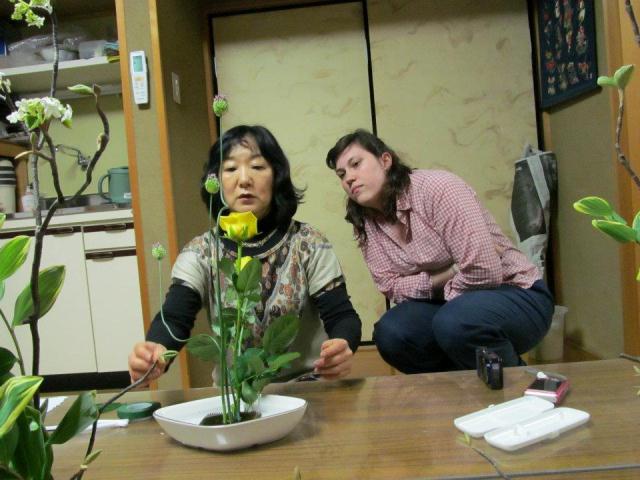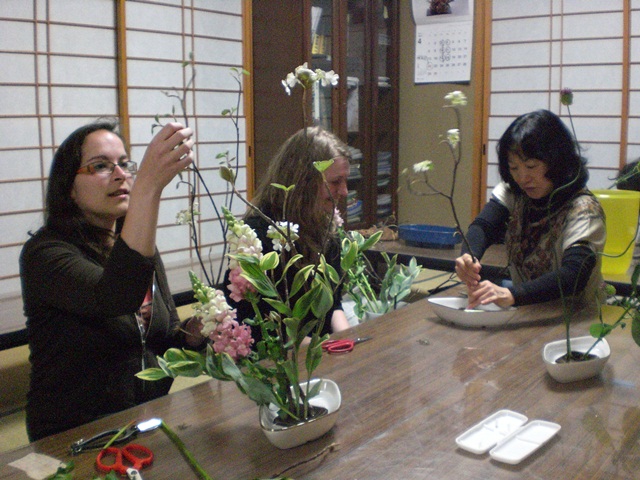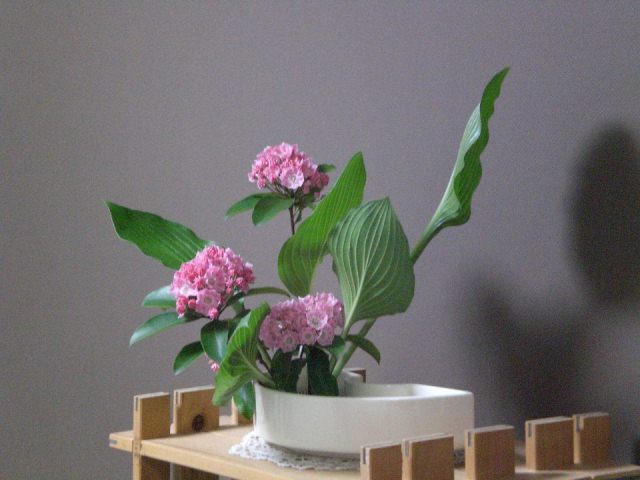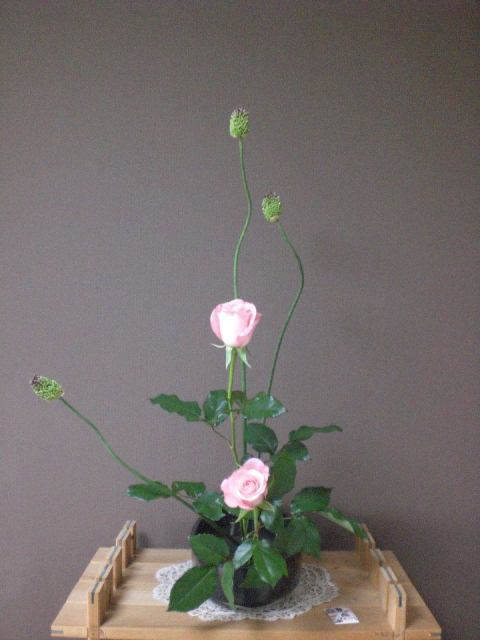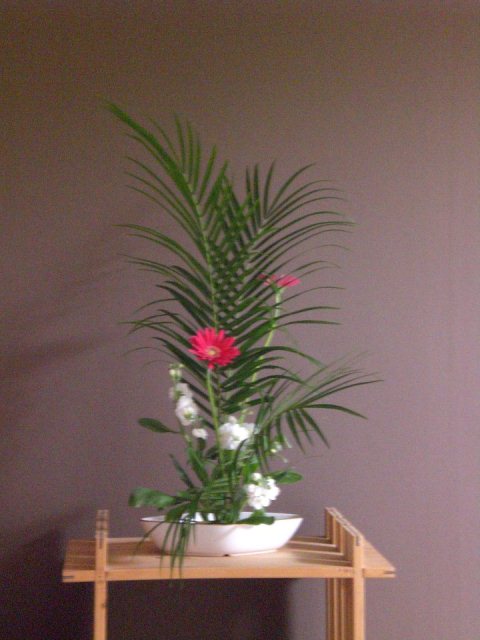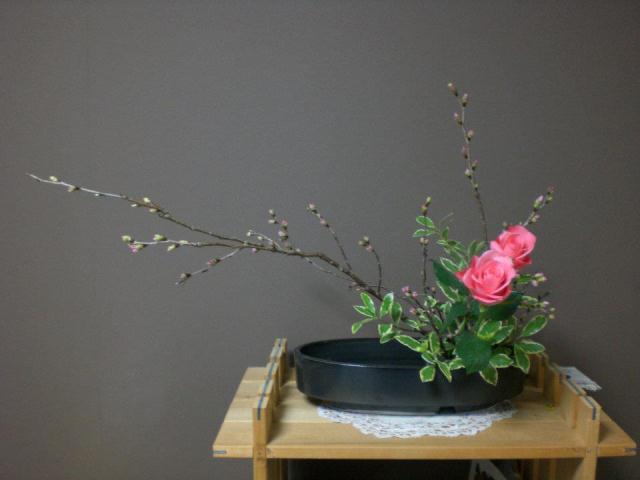JET Program CIR Report
Bonus Report! (3 bis)
July 2012By Marlies
(Coordinator for International Relations)My third report has taken a while to come out, and part of the reason for that was that I had a piece in there that did not quite fit, but I think it is interesting stuff, so I decided to add it as a bonus report on its own here :-)
My job is all about introducing Belgian culture to the Japanese. But while I am in Japan, I also want to learn as much about Japanese culture as possible. Even before coming here, I knew I wanted to take advantage of the time I would be in Japan to learn things that I would not be able to learn back in Belgium.
First on that list was learning to play the koto, a thirteen-stringed harp-like musical instrument. A sensible person would have chosen the Japanese flute or even the shamisen, a small instrument that you can take home afterwards… I however am not one of these sensible persons, hence I chose the biggest, heaviest, most inconvenient thing imaginable, but I love it :-)
During one of my previous stays in Japan, I had had an introduction to koto-playing and I had decided then that I would take up lessons if the opportunity ever presented itself. So on Saturday mornings I now reserve some time for plucking the koto strings at the International Lounge in Kanazawa.
To play the koto you have to put on “nails” on thumb, second and third finger of your right hand, with which you pull or brush the strings, while you use your left hand to push down the strings to alter tone height. Music scores are nothing like the western music bars, but simply vertical columns with numbers from one to thirteen, corresponding to each of the thirteen strings, in Japanese writing. Little symbols and strokes are added to determine the length of the tone, or which finger to use, etc. Traditionally the koto is played on the floor (in traditional rooms with tatami mats), with the player in seiza or Japanese kneeling position with one’s legs folded underneath one’s body and the koto positioned in front of the player (as you can see in the photo). I can assure you, it is quite the torture for those poor knees and legs.
Click image to enlarge Lesson of Koto This is a picture of my teacher and me. I am the only student on Saturday mornings, so I have the luck of getting private lessons! My lessons are quite short, and I have to skip regularly due to work, so I am not quite sure if I will ever really get the hang of it, but I am enjoying myself while trying! :-)
Number two on the list of things to try was ikebana, Japanese flower arrangement. Ikebana is a traditional art form much like tea ceremony or calligraphy. There are a number of famous schools that have been passing down their techniques for generations, and when you really want to learn the art, you become a student of one of these schools. Unlike in the West, where we tend to take lessons here and there, always trying out new things, in Japan once you pick a certain school, you stick with it, and you don’t go round to different schools. So before you start it is important to first consider all your options and then make a well-informed choice… Or the choice is made for you, as it was in my case as well. My Japanese sugar auntie has been a student of the Ohara School of Ikebana for many many years, and so it was decided that I would study Ohara style ikebana too :-) No complaints though, for me it was the best possible choice as the Ohara school has branches all over the world, including Belgium! So when I go back home I will be able to continue my lessons there.
Click image to enlarge Ikebana class I have always liked flowers and flower arranging and I was excited about learning to approach flower arranging in a new way. And from my very first lesson it has become clear: Ikebana is different. It is a fundamentally different approach to what we do and how we see things in the West. (Although I don’t like using this notion of an “East-West” dichotomy too lightly, I believe it does apply here, so in lack of better terms…)
The biggest challenge is fighting the symmetry :-) I never realized it before, but it seems to be engrained in us, not just me, but Western people in general (when Sabine and Dora came to try out, they had the same tendency to make their arrangements symmetrical and a few other ikebana teachers told me they had the same experience with Westerners as well).
Ikebana is all about asymmetry, about a very constructed, but if executed correctly, effortless looking rendition of nature in its most purified form. Before starting I thought ikebana would be all about some sort of mental state, kind of a gut-feeling thing… but I should have known better… In this country where silent rules and unwritten regulations permeate every aspect of life, the traditional arts display the most rigorous sets of rules to adhere to of them all. So in ikebana also, flower arrangements are divided into fixed shapes and forms, each complete with a detailed list of points of attention. When putting a practice piece together, vessel, shape and choice of flowers are all predetermined, in other words, you just make variations of fixed basic patterns. But even so, for a beginner, that is quite a challenge every time.
A typical lesson goes like this: The first time using certain flowers or making a certain shape is always difficult. Especially when it is a new shape I have no idea what it is supposed to look like, so sensei (Japanese for teacher) then has to demonstrate it herself first. While doing so she explains the things I have to pay attention to. When she is finished I stare at the piece for some time, trying to take a mental picture of it. Then I take everything out and start over, trying to recreate what she did, though the end result is usually a bit of a mess. Sensei then corrects it, gives a few tips or remarks, and I try again. Third time tends to be the charm; things suddenly make sense and I end up with a piece that does not need (much) correction anymore :-)
What strikes me every time, is how sensei will look at what I have done, change the angle or position of a single flower or leaf, and instantly the entire arrangement changes, it is like everything falls into place… In those moments, I wish I could look through her eyes and see what she sees, and I wonder if I’ll ever get that far myself. “When a piece is good, you can look at it for hours”, is what my sugar auntie once said when we were at an ikebana exhibition. And now that I have experienced first hand how hard it is to get the balance exactly right, I have a totally new appreciation for the effort that goes into an arrangement.
When talking about it like this it may seem that ikebana is very serious business. But I can assure you that the lessons are not that solemn or uptight at all :-)
Our class consists of a group of ladies (and one man) of varying ages, from twenty-something to sixty-something. On lesson evenings it is a coming and going of people, usually there are about four other ladies there around the same time as me. It is a merry chaos of women chatting and laughing, cutters clipping vigorously, and occasional outcries of praise when someone has finished a piece.
And then there is sensei of course, and her mother, who is a teacher herself, but takes on a background role during the lessons. (I will call her mum teacher for sake of clarity) Like I said, mum teacher doesn’t do much. She mainly sits there, does the accounting, and talks… well lectures… about Japanese culture and esthetics, about flowers and lacquer ware and seasons and porcelain,… mostly for my sake. Sensei ignores her, rolls her eyes whenever mum teacher goes off on another monologue :-) “Poor mum teacher, getting eye-rolled at by her daughter, but also poor sensei, having to hear mum teacher preaching all the time…”, I then think, and just enjoy the spectacle.
I am the newest trophy member of the group, the ultimate status symbol lifting this ikebana group far above all other groups who do not have… a foreigner! It is in situations like these that the Japanese’s crazy adoration for all things foreign becomes acutely obvious. Especially middle-aged women tend to shamelessly display this kind of behaviour towards me. But over time I have developed a very effective strategy to deal with this phenomenon: They spoil me, I let them :-)
Click image to enlarge Ikebana One of the members is a boisterous middle aged woman, who once came in shouting “Marisu”! as if we had known each other forever, when in reality it was one of my first lessons still and I had only met her once, months before… (I liked her immediately—an atypical kind of Japanese :-) ) She continued in the same breath: “I saw you on TV!!!” You should know, there is only one thing that beats having a foreigner as a student in your group, and that is having a famous foreigner as a student in your group :-) I am not saying I am some celebrity, it is simply a fact that I appear in the newspaper regularly, and on the radio, and TV too… so maybe I am somewhat of a local celebrity… “You were soo great! I saw her,” she elaborates to the other ladies in the room: “she made Belgian chocolates!”(you guessed it, she saw the Valentine chocolate TV disaster)“And that TV-presenter really didn’t know what she was doing did she, wasn’t any good at all, was she?!” I was touched by such display of favoritism on my behalf, which did not end with the chocolate. Ever since then, she has loyally cut out every single newspaper article that has appeared with me in it and brought it to class to show everyone.
I also went to an ikebana exam… which is a story on its own :-) Weekly ikebana lessons are all well and good, but it would not be Japan if there were no means to compare your own level of accomplishment with that of your fellow/rival students, and receive some sort of black-on-white proof of your ability. That is why the Ohara school organizes exam days at regular intervals, for students of all levels to prove their worth in the art of Ohara ikebana. When sensei suggested I should take part in an exam in April (I started in February o_O) I light-heartedly accepted, thinking it would be another interesting experience. But when I arrived on the day and it was me and about a hundred hysterical Japanese women, I realized this exam was not something that ought to be taken lightly… if you were Japanese. But since I was not, the importance of the event somewhat escaped me and I found myself to be the on-looking outsider again :-)
This is a short summary of the course of events: You go into the room, you make the arrangement you were instructed to make (you know the flowers and shape beforehand so you can practice) when you are done you leave the room, when everyone is out a judge teacher goes in and rates the pieces, and then everyone can come back in. The top scores of 95 and 100 get little score boards on their table, the lower scores do not. (I got 90 by the way) Judge teacher then goes on to speech about how great it is to see so many people do ikebana and then looks at me, starts to shout (to make sure everyone in the building can hear her) in English (to show to everyone that she speaks English) about how great it is that a foreigner is “in tha house”… (of course she did not say it like that, would have been funny if she did though :-) ), and then asks me if Japanese is ok (although she has been talking in Japanese just earlier). She then turns her attention to the second rarity in the room: a guy! After she is done relating how thrilled she is to see a man doing ikebana as well, she finally gets to the point, which is correcting our arrangements. She comes to my table and says, it has to be tighter, “neat” “tight” is added in English for extra emphasis. She then moves one leaf 1cm to the center and moves on… I do not quite see the difference… afterwards mum teacher comes over and praises my work: “The angle of those roses is great” (mum teacher always talks about angle…) She then corrects another twig and that is it for my first exam :-) Moving on to the next room where judge teacher has corrected another group of students, she repeats the same speech from before, adding how happy she was to see a foreigner and a man in the previous classroom…
And with this anecdote I end my rhetoric about ikebana :-)
Just recently I have started point three on my try-out list… kimono dressing! I am sure this is going to make for some great story material as well… but that will be for the next report ;-)
I hope you enjoyed this bonus report with its little (and very subjective I must add) glimpses into Japanese culture. I will try unveiling some more interesting facts next time!
Groetjes uit Kanazawa!
Marlies(Photos by Marlies)


